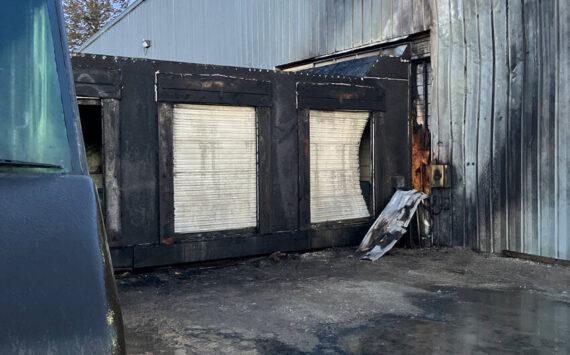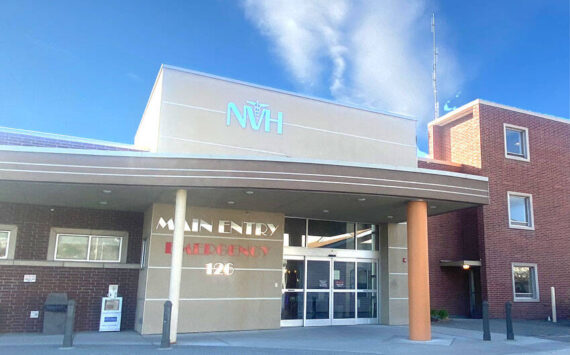OROVILLE – Eight Oroville students will accompany OHS teacher George Thornton on a three-week educational and cultural opportunity in the Dominican Republic this March.
Thornton received a letter from Rustin Crandall, Grants Coordinator for iEARN-USA of New York saying that through the schools previous contacts and exchanges with schools in other countries, Oroville High School had been recommended to participate in an exchange after another school on the east coast was unable to make the trip.
IEARN-USA, the International Education and Resource Network, has put together a Pioneering High School Science Exchange Program linking classrooms in the U.S.A. and the Dominican Republic around Sustainable Forestry and Fair-Trade Practices.
“The basic premise of the grant is to have schools in the Dominican Republic, New York and another location in the U.S. communicating with each other around the theme of forests (from many perspectives — environmental science, social studies, mathematics, etc.,” writes Crandall. “It involves four high schools in the Dominican Republic, two in New York City and we are looking for one or two more schools in another area of the U.S. The program involves a three-week exchange with high schools in Jarabacoa, Dominican Republic. This exchange is for two teachers and eight students A trainer from The Center for Innovation in Engineering and Science Education (CIESE) at Stevens Institute of Technology and I would visit Oroville for a three-day forestry workshop and pre-departure orientation sometime before the exchange.”
A grant from the Bureau of Education and Cultural Affairs of the U.S. Department of State called Tres Bosques, Un Mundo (Three Forests, One World) Program would pay for the students, who have yet to be chosen from among those in the high school, and their teachers to travel to the Dominican Republic, which is on the Isle of Hispaniola, the second largest island in the Caribbean, only second to Cuba.
“Our school is getting the opportunity to participate in the exchange because of the students’ continued efforts and commitment to working with schools in other countries,” said Thornton, a Social Studies teacher at OHS.
He adds that High School Principal Steve Quick, who is fluent in Spanish, will be the other Oroville staff member accompanying the students.
Thornton, who has been on other cultural exchanges, including one funded by an iEARN grant that helped him go to Tajikistan on an exchange, wanted to emphasize that the history of performance by Oroville schools and its students is the reason why the district’s name came up and was recommended when the opening availed itself.
He said he believes the decision was “based on the fact that the students here are good at actually following through and hence have earned the chance to participate.”
The school is taking applications for the eight students who will go on the exchange. Several criteria have been set for the applicants, including good grades, being reliable and showing leadership, flexibility and the ability to get along and cooperate. Thornton is recommending the students be juniors so they can continue their contact with the Jarabacoa schools in their senior year. He said students who are currently seniors have enough on their plate getting ready for graduation.
“We will continue to follow through and work hard to make this exchange a good experience for everyone. Hopefully this will lead to great learning experience and give us a chance for more opportunities in the future,” said Thornton. “We all know a major part of life is following through and commitment to the task at hand.”
The selected students will travel to the Dominican Republic for their stay March 6 to 27, according to Thornton. In return, eight Jarabacoa students would come to Oroville in the last three weeks of April for an exchange. The district will be looking for families to host students who will be coming to Oroville.
“Jarabacoa is fairly small, we’ve been getting mixed reports, but it looks like it might be about the size of Omak. It matches up more and more with Oroville,” he said.
And while Haiti also shares the Isle of Hispaniola with the Dominican Republic, Thornton said the recent earthquake in Haiti did not affect the area where the students will be traveling.
“The area is known for its big waterfalls, it is mountainous, green and lush along a river valley known as the ‘Land of Eternal Spring,'” said Thornton.
The fact that area around Jarabacoa is mostly agricultural makes Thornton feel the Oroville will be a good fit, especially when the Dominican students come to here.
I-Earn’s Crandall offered an overview of the exchange.
Forest Ecology Workshop - three days for a minimum of 10 participants (the travelers) before the exchange. Workshop given by the Center for Innovation in Engineering and Science Education (CIESE) at Stevens Institute of Technology.
Exchange to DR - three weeks March 6 to 27, 2010.
DR participants at your school – April 6 to 27, 2010 (They will need to stay with host families you would find for them-they would leave for YouthCaN in NYC on April 22/23–so could some of the teachers/students from your school who went to the DR if possible).
Videoconferences - May-December 2010, put on by Global Nomads Group.
Alumni Mini-grants - Students may submit proposals for activities (community service, raising awareness) and receive funding to carry them out from August – December 2010.
“There will be some kids that go back to New York to make a presentation at the American Museum of Natural History of what was learned in the exchange,” said Thornton, “This will give a student another opportunity for exposure. However, the entire group would be forming the presentation.”







